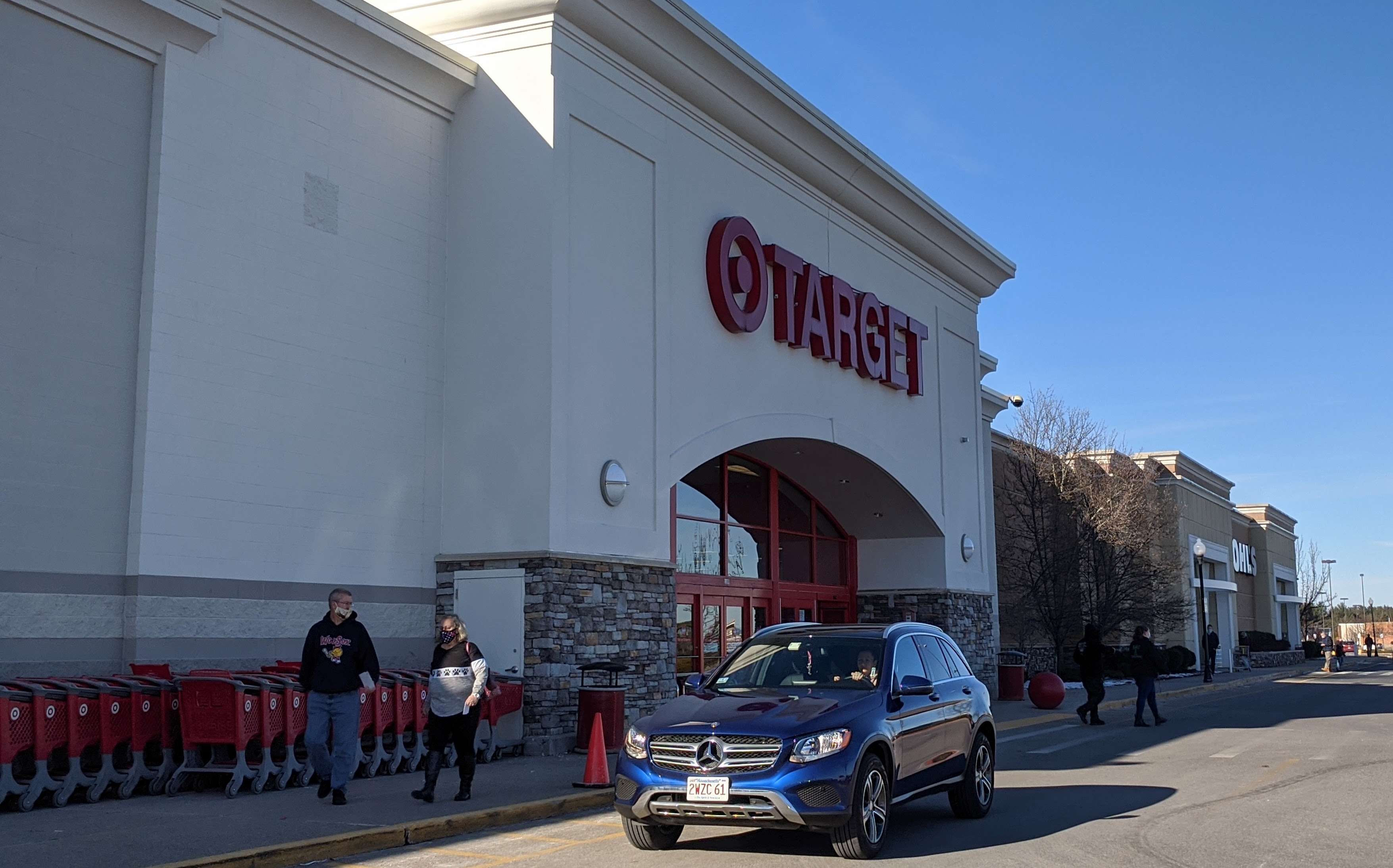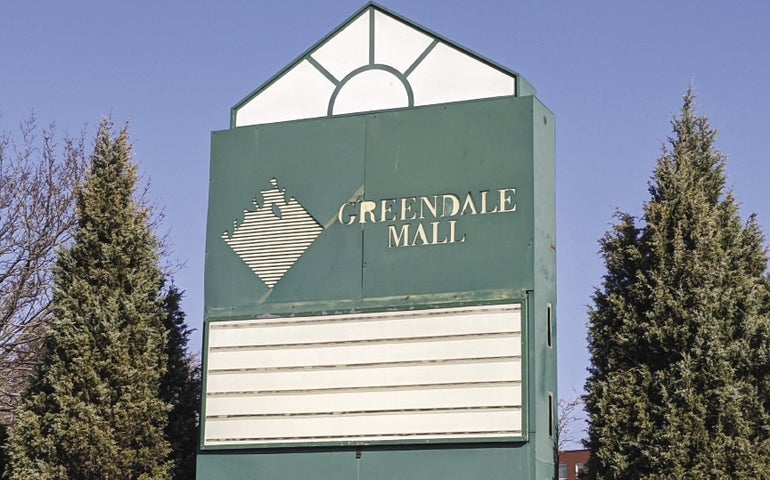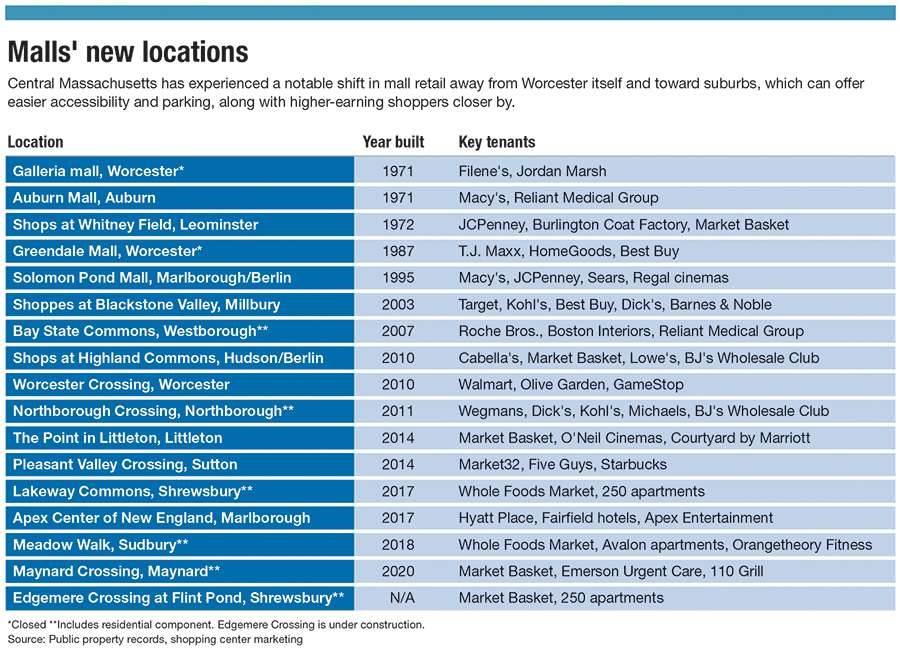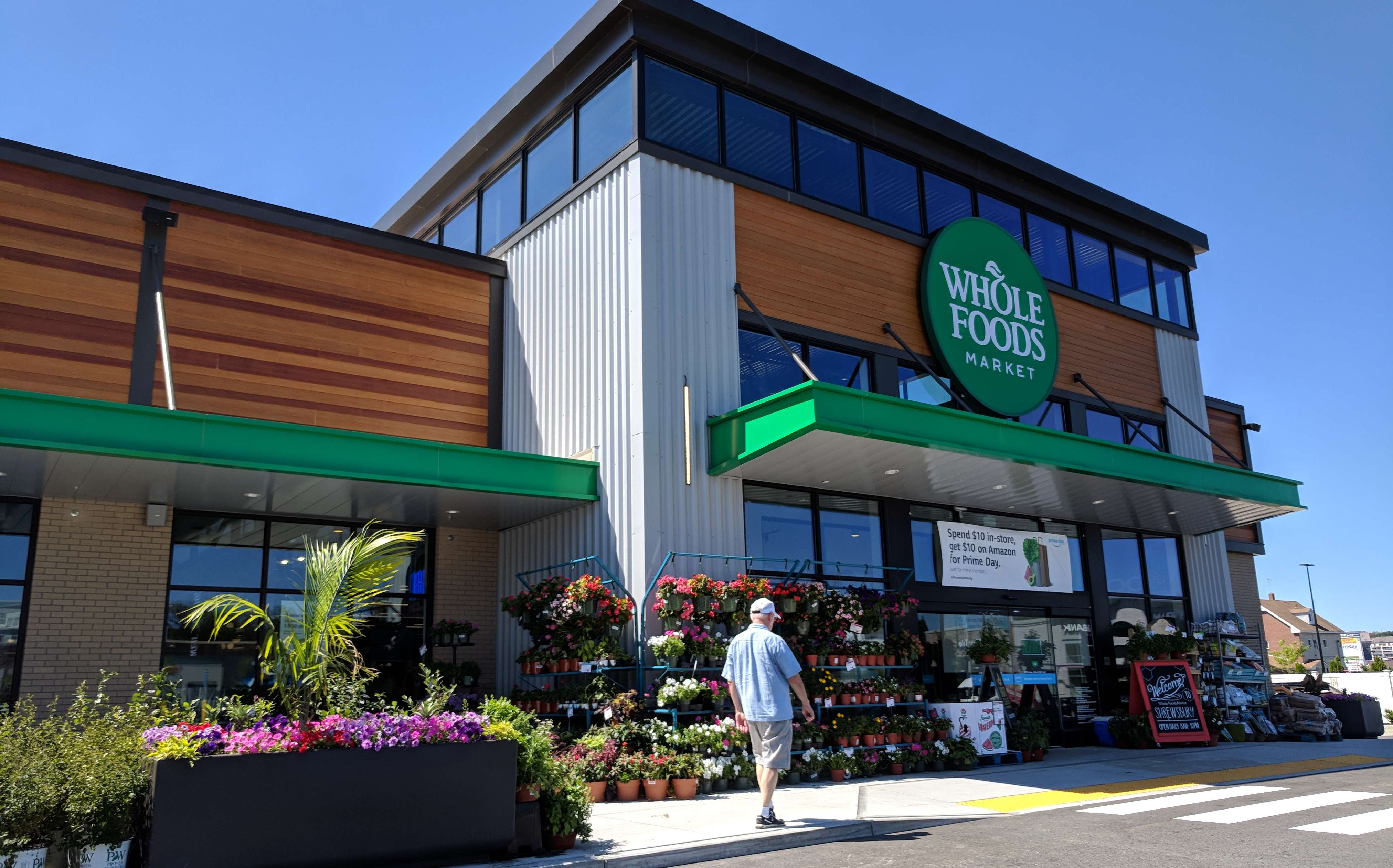
Zero malls: Worcester is no longer a regional indoor shopping destination
 Photo | Grant Welker
The Greendale Mall, its eventual demise long foreshadowed, suffered from obvious neglect in its final years as shoppers increasingly turned to suburban shopping centers.
Photo | Grant Welker
The Greendale Mall, its eventual demise long foreshadowed, suffered from obvious neglect in its final years as shoppers increasingly turned to suburban shopping centers.
It was 1987, and Worcester was perhaps at its apex as a regional shopping destination.
The Greendale Mall was opening, joining the Galleria mall downtown and completing a long conversion of the city from a place once drawing shoppers to downtown storefronts – like Denholm’s and Woolworth – to one attracting people to indoor malls in a new era of retail.
Worcester may have improbably managed to keep shoppers coming into the city in the age of new highways and suburbanization, but it didn’t last. In the past decade or two, Worcester has seemed to lose its place as the shopping heart of Worcester County.
The Galleria, which opened in 1971, closed in 2006. Its glory days were gone long before then, with one anchor, Jordan Marsh, closed by 1991, and the other, Filene's, two years later. In the end, the Galleria never came close to living up to a neighborhood-saving standard, and even city officials deemed the mall a failure.
The demise of the Greendale Mall was similarly long foreshadowed.
Anchors left, the mall went into foreclosure, and the Worcester Regional Transit Authority even eliminated a bus stop at the mall. Finard Properties of Boston, which bought the mall in 2019, first pitched knocking down the mall in favor of a denser mixed-use development, but now the plan is to replace the mall with an Amazon warehouse.
[Related: Greendale Mall-to-Amazon would be a first for New England]
Ultimately, Worcester has the unwelcome distinction of having not just one but two closed malls. The hundreds of thousands of square feet of stores they once offered have not been replicated elsewhere in the city.
“Unfortunately, when you have these big anchors leave and they’re not replaced, a mall can fall out of favor quickly,” said Aaron Jodka, an analyst for the real estate firm Colliers International in Boston.
A smaller city’s unique challenges
Worcester appears to be caught in a difficult place: it doesn’t have the density and wealth of Boston, which is seeing new retail in the Seaport and North Station, with hordes of workers and residents within walking distance. It also doesn’t have the suburbs’ free and abundant parking, along with more disposable income within a close radius.

“Lots of places seem to have this issue,” said Rob Baumann, an economics professor at College of the Holy Cross in Worcester.
Those demographic challenges could pose a particular problem in Worcester, which has the state’s fourth-worst poverty rate.
“It’s the bodies times dollars,” Jodka said, describing the importance of having the right mix of disposable income and enough people who have it.
It isn’t only larger-profile projects at risk.
The city had dozens of vacant storefronts downtown before the coronavirus pandemic began, and a state incentive program to fill such retail spaces has yet to make a dent. The clothing store Shack’s and the hardware store Elwood Adams – two survivors of a shift away from downtown as a retail center – both closed in the past few years.

Downtown Worcester, which has been prioritized for new development by city officials, is one of the city’s poorest neighborhoods, where parking is most difficult and where foot traffic is often still light. In the Canal District, three planned developments would add shops, housing and offices next to the Polar Park baseball stadium, but the neighborhood around it has 35% of residents living below the poverty line, according to Census data.
“Even when Worcester had two malls, they struggled to survive,” said Mike Elmes, a business professor at Worcester Polytechnic Institute, describing what he sees as a longtime lack of shopper support for retailers in the city.
“If you live in the suburbs of Worcester or even in the city, you can easily drive to Solomon Pond or [the Shoppes at Blackstone Valley in Millbury] or you go towards Boston to get whatever you need,” he said.
[Related: Malls stare down pandemic, increased vacancies]
Tucker White, a research director in the Boston offices of the real estate firm Hunneman, sees a solution less in focusing on retail and more on attracting what will ultimately bring retail: more jobs and more residents. Starting new retail without the growth of those other industries next door is a major risk, he said.
“It’s dependent on other commercial sectors,” White said.
In Worcester, White said, that could come, for example, from new biotech jobs at The Reactory, a biomanufacturing park on Belmont Street next to UMass Medical School.
But even then, White added, a critical element will be ensuring those biomanufacturing workers are spending time and money in the neighborhood outside of work – or even moving to homes in the neighborhood.
“Even if you get a new headquarters in downtown Worcester, it still depends on their worker demographics,” he said.
A continued flow to the suburbs
Long before Amazon and then the coronavirus pandemic upended retail, Worcester began losing shoppers to the suburbs. Another is on the way at the former Edgemere drive-in movie theater site on Route 20 in Shrewsbury.
Those plazas often have a few features in common: They’re outdoors, which takes advantage of a trend away from indoor malls. They’re also often anchored by grocery stores, which are more e-commerce proof than Sears or JCPenney. In the case of Lakeway Commons and others, they feature homes for a built-in customer base.

A few retail plazas – though smaller than the others mentioned – have opened in Worcester, including the Trolley Yard between Park Avenue and Grove Street, and Walmart-anchored Worcester Crossing off Route 146.
As for the last remnants of the city’s long-ago downtown shopping era, Denholm’s remains, but largely as an office building. Ironically, its storefronts feature no retail at all. The Woolworth building on Front Street is part of a small development that has attracted the ire of city officials who want to see better investment in a site directly across from City Hall.
Retail experts don’t envision the regional shopping draw to return.
Baumannn said he’s glad to see the Greendale Mall won’t be redeveloped as another retail destination.
“It’s a great location,” he said, “and I think the city would benefit by converting it into an industry that isn’t struggling nationwide.”
WBJ Web Partners
Worcester Centre failed for two predictable reasons: no free parking, and no places to eat. There were a number of small cinemas, but if you came out of one after 6.00pm, you had to leave the center to get a cup of coffee - let alone a meal. Once Greendale Mall lost Charlie's, there was no reason to stay there any longer than it took to buy what you came for.









6 Comments